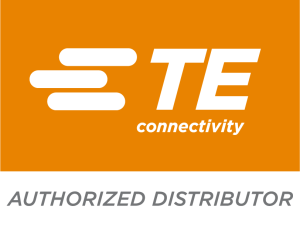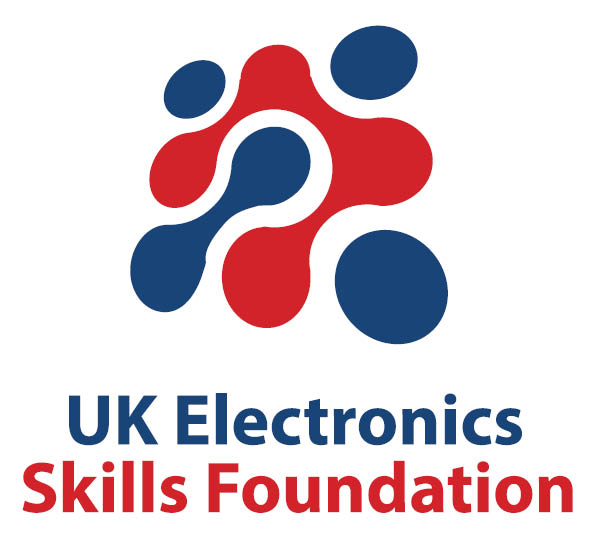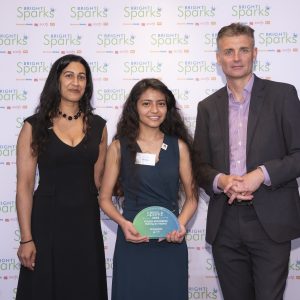Here, in our series on the latest EW BrightSparks of 2022, we highlight Nishika Chettry, an MEng Student at Aston University, who is also working as an Embedded Systems software developer at Renesas Electronics.
Achievement
Nishika told us that her interest in pursuing a career in robotics drove her to choose a degree in electronics. Not having built a basic circuit before starting University, she described herself as a complete outsider to electronics when she started.
After some initial discouragements, she moved forward with the support from of her teachers and her own self belief. Her hard work paid off, achieving an average of 95% in her first year. This effort saw her win two awards: the HKP Burt Memorial Prize and the IMI Prize.
Further experience followed as she worked from scratch on responsive design web development projects over the summer when she got to grips with HTML, CSS and JavaScript. Her website’s purpose was to develop a good portfolio that could be beneficial for securing placements and help provide details about her projects and achievements in more detail than in a CV.
During her second year, she achieved an average of 89% and won the Electronic Engineering Departmental Prize at her university. Due to an her excellent academic record, she was offered a transfer to a fast-track MEng programme. The same year she received the UKESF Scholarship and secured a placement with Renesas Electronics as part of it.
Currently, she is balancing her full-time placement role as an embedded systems software developer at Renesas and her part-time studies as an MEng student.
At Renesas, she is developing secure bootROMs for microprocessors. While she didn’t have prior experience in this field, she has adapted and applied what she has learnt.
FPGA testing
For example, she performs different types of testing as a part of her development work, and one of them involves FPGA testing.
Here she developed an automated test system using Python to perform testing for the supported boot modes more efficiently. It has an interactive GUI and automates about 80% of the process, with the remaining 20% being manual steps such as toggling physical switches and boards. The most challenging aspect of this task, she told us, was that was had never worked with Python before. She therefore undertook an introductory course on Python in her spare time and then built on it using online articles and blogs.
The task was extremely challenging: to interface the IDE used for bootROM development with the script, automate all the steps for setting up the debugger and OTP for keys and passwords, running the debugger, getting the test results and formatting them into a readable file. The system also guided the user through setting up the hardware for the manual steps involved.
Upon completion, it made testing much simpler and easier. The user simply has to choose the test case on the GUI and press a couple of buttons to load and run the system. All the background setup and debugging are performed by the system and the result is presented in a well-formatted file. This has allowed her team to perform more tests on the system, which has improved the code’s reliability and helped highlight some issues.
Community / STEM
Nishika is always seeking opportunities to help promote STEM careers amongst young people, especially girls, she told us.
Last June, for example, to celebrate International Women in Engineering Day, her university initiated a STEM superhero campaign. This was intended to inspire young students to pursue a STEM career. Nishika was involved in the filming of the campaign, where she acted as a ‘STEM superhero’ and spoke about the role of an electronics engineer and why one should choose it as a career. This was shared with the local schools.
She was also involved in the ‘Girls into Electronics’ course aimed at promoting electronics amongst sixth-formers. Her role was to help with the ‘Insight into Electronics’ sessions, which were the hands-on practical sessions of the course. Specifically, she helped facilitate interactions amongst participants, spoke about her experience and the projects she had been involved in and answered their questions about the session’s content and her personal experience of studying electronics.
Nishika also made some contributions to a short course at the GBS Institute of Technology. As a part of this, she shot a video in which she shared her experience of studying Electronic Engineering at university. It helped her virtually reach out to people and give them an insight into studying Electronics at a higher education level.
She also helped UKESF develop a beginner electronics course for sixth form students, aiming to prepare them for study in higher education. She wrote a section on ‘Wheatstone bridges’, ensuring it was simple and easy to understand for beginners.
Furthermore, to celebrate International Women’s Day this year, she participated in the BreaktheBias campaign at Aston University, where she wrote about her aim to celebrate women in computing. She has been working with the outreach team of Aston to write a blog on her university and placement experience, to help promote her course and encourage young people to choose a career in Electronics.
She also recently become a part of the UKESF Buddy Scheme, where she is mentoring a new UKESF Scholar. Nishika’s role is to share her experience and help the new Scholar adapt to the workplace, alongside offering advice on career development and outreach work.
Finally, she is working on a personal project named ‘I Speak Electronics‘. She has created a YouTube channel and an Instagram page to upload videos and other resources. The main objective of this project is to reach young people and motivate them to study Electronics by giving an insight into what Electronic Engineering is, and also sharing her personal experience of studying it at university.
She is pictured above receiving her award from Isabella Mascarenhas (VP, Grass Roots & Shining Stars, RS Group), one of the EW BrightSparks judges, and Richard Watts (emap MD, publisher of Electronics Weekly). Congratulations to Nishika!
BrightSparks 2022 overview
EW BrightSparks Supporters
We are very grateful to the companies and organisations that help support the EW BrightSparks programme, and make it possible. Special thanks to: TE Connectivity and the UK Electronics Skills Foundation.
TE Connectivity
 TE Connectivity is a global industrial technology leader creating a safer, sustainable, productive, and connected future. Our broad range of connectivity and sensor solutions, proven in the harshest environments, enable advancements in transportation, industrial applications, medical technology, energy, data communications, and the home. With more than 85,000 employees, including over 8,000 engineers, working alongside customers in approximately 140 countries, TE ensures that EVERY CONNECTION COUNTS. We are delighted to be involved in the Bright Sparks initiative which allows TE Connectivity to learn from and inspire the next generation of engineers. Learn more at www.te.com and on LinkedIn, Facebook, WeChat and Twitter.
TE Connectivity is a global industrial technology leader creating a safer, sustainable, productive, and connected future. Our broad range of connectivity and sensor solutions, proven in the harshest environments, enable advancements in transportation, industrial applications, medical technology, energy, data communications, and the home. With more than 85,000 employees, including over 8,000 engineers, working alongside customers in approximately 140 countries, TE ensures that EVERY CONNECTION COUNTS. We are delighted to be involved in the Bright Sparks initiative which allows TE Connectivity to learn from and inspire the next generation of engineers. Learn more at www.te.com and on LinkedIn, Facebook, WeChat and Twitter.
UK Electronics Skills Foundation
 The UKESF’s mission is to encourage more young people to study Electronics and to pursue careers in the sector. In the UK, the Electronics sector is big, valuable and growing; however, the demand for capable, employable graduates is currently outstripping supply. We are an educational charity, launched in 2010, with both public and private seed-corn funding. We operate collaboratively with major companies, leading universities and other organisations to tackle the skills shortage in the Electronics sector.
The UKESF’s mission is to encourage more young people to study Electronics and to pursue careers in the sector. In the UK, the Electronics sector is big, valuable and growing; however, the demand for capable, employable graduates is currently outstripping supply. We are an educational charity, launched in 2010, with both public and private seed-corn funding. We operate collaboratively with major companies, leading universities and other organisations to tackle the skills shortage in the Electronics sector.

